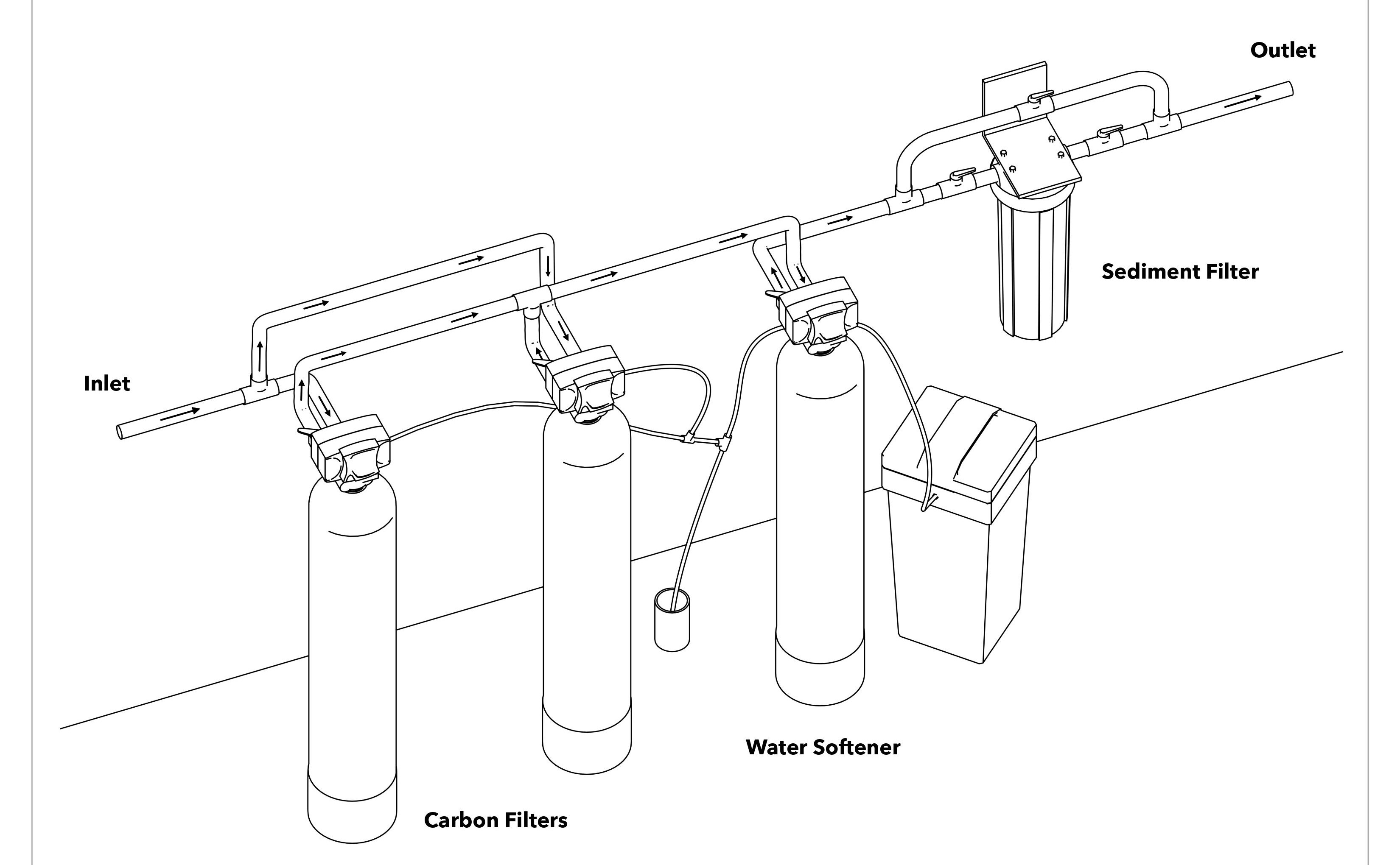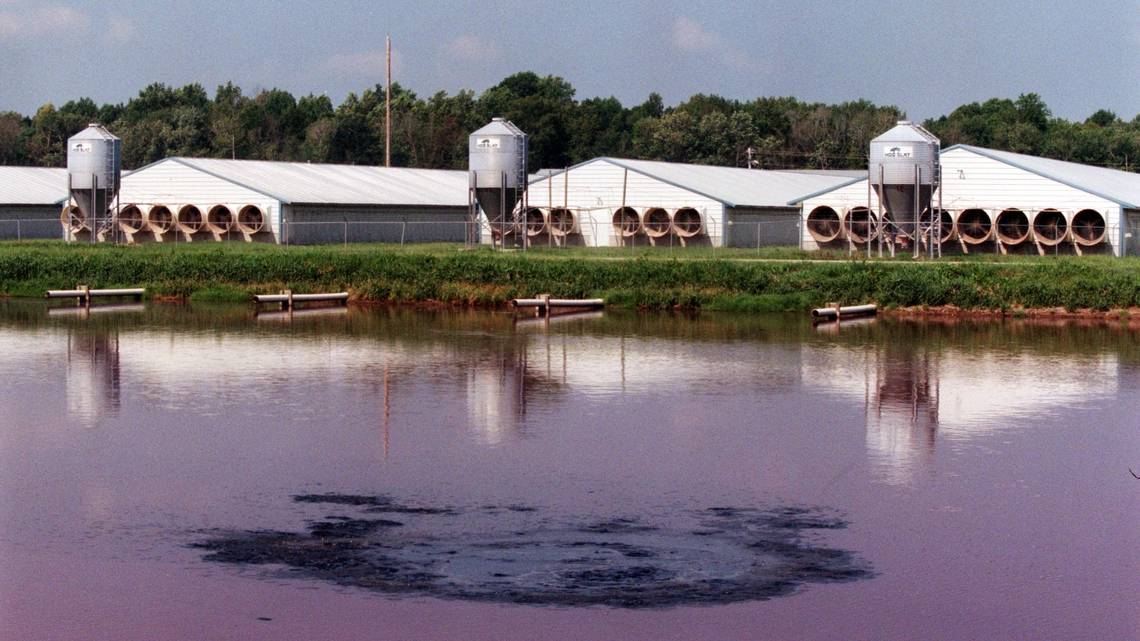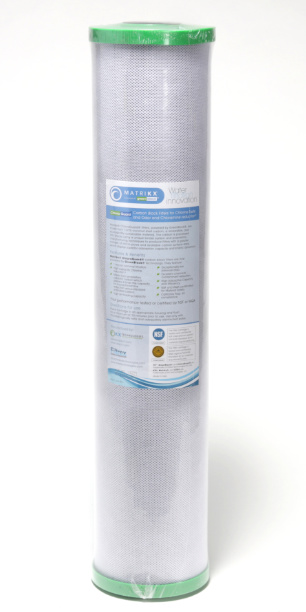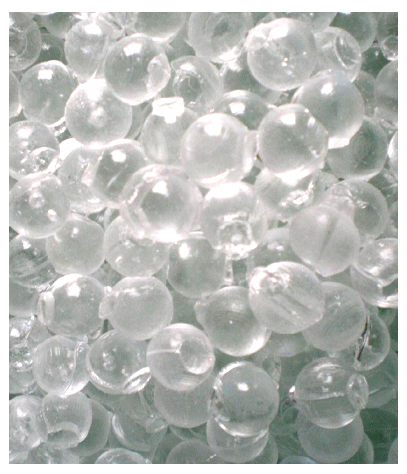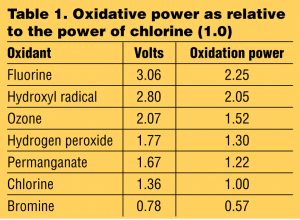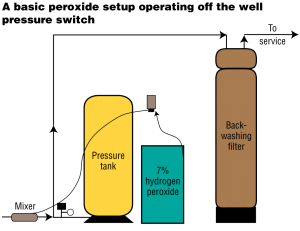The billions of animals farmed each year in the US for food generate nearly 2.5 billion pounds of waste every day — around twice as much as people do — yet none of it is treated like human waste. It’s either stored in giant pits, piled high as enormous mounds on farms, or spread onto crop fields as fertilizer. And a lot of it washes away into rivers and streams, as does synthetic fertilizer from the farms growing corn and soy to feed all those animals.
“These factory farms operate like sewerless cities,” said Tarah Heinzen, legal director of environmental nonprofit Food and Water Watch. Animal waste is “running off into waterways, it’s leaching into people’s drinking water, it’s harming wildlife, and threatening public health.”
Yet in practice, the Environmental Protection Agency appears to be largely fine with all that.
When Congress passed the Clean Water Act in 1972, it explicitly directed the EPA to regulate water pollution from “concentrated animal feeding operations,” or factory farms, among other businesses. But according to Food and Water Watch, fewer than one-third of the largest factory farms are actually regulated — and lightly, at that.
Earlier this month, the EPA told Food and Water Watch it’s going to stay that way. The EPA rejected a 2017 joint petition from the group and other environmental organizations, calling on the agency to better regulate factory farms under the Clean Water Act.
The kind of regulatory evasion that allows for so much water pollution is just the latest example of what food industry reformers call “agricultural exceptionalism,” which lets the sector operate under a different set of rules than other parts of the economy, leading to widespread abuse in the food system. It’s fueled by romanticized myths about farming that mask the original sins of American agriculture — most notably slavery and mass land expropriation from American Indians — and the modern-day issues of mass pollution, animal cruelty, and labor exploitation. And it’s come to affect virtually every part of how food gets from the farm to your table.
Rather than regulate more factory farms for pollution, the EPA said in its recent decision that it will set up a committee next year to further study the issue for 12 to 18 months. The agency denied an interview request for this story, but a spokesperson said in an email that “a comprehensive evaluation is essential before determining whether any regulatory revisions are necessary or appropriate.”
The National Pork Producers Council celebrated the news, saying in a statement, “We are grateful for the Biden administration’s continuous commitment and support of agriculture.”
Silvia Secchi, a natural resource economist at the University of Iowa, said the EPA’s plans for a lengthy evaluation amount to little more than a stall tactic. “We’ve been studying some of this stuff for decades,” she said. “We already know what needs to be done.”
We’ve also been here before, she added, pointing to another landmark piece of environmental legislation: the Clean Air Act. In 2005, after years of industry noncompliance with the law, the EPA under Republican President George W. Bush brokered a deal in secret with the pork industry, promising to hold off on regulating factory farms so long as they funded research into the issue. Nearly two decades later, no regulatory action has been taken. In the last five years, Congress and the EPA have exempted farms from two other critical air quality laws, despite more deaths linked to air pollution from factory farms than pollution from coal power plants.t’s the tactic of the [agricultural] industry to slow walk everything — renegotiate, restudy, reevaluate the obvious,” Secchi said.
Agricultural exceptionalism, explained
To understand why agriculture so often gets a free pass on commonsense regulation, we have to go back to the early 1900s. Back then, most workers across industries toiled for six days a week and often well over eight hours a day, including millions of children. President Franklin Roosevelt campaigned on shorter hours and higher pay, and in 1938, he signed the Fair Labor Standards Act into law as part of the New Deal. It set rules for minimum wage, overtime pay, maximum workweeks, restrictions on child labor, and more.
Time called it “the law that changed the American workplace,” and it did — except on farms.
“To obtain sufficient support for these reforms, President Roosevelt and his allies had to compromise with Southern congressmen,” Alexis Guild of the nonprofit Farmworker Justice wrote in a 2019 paper with her former colleague Iris Figueroa. “These compromises included exclusions of farmworkers and domestic workers from the law’s protections, preserving the plantation system in the South — a system that rested on the subjugation of racial minorities.”
The carveouts for agriculture in labor law set the tone for how farming would be regulated — or unregulated — for decades to come.
On top of exemptions from critical environmental and labor legislation, farms are also exempt from the Animal Welfare Act, leaving billions of animals raised for meat, eggs, and dairy — almost all of whom are raised in terrible conditions on factory farms — with virtually no federal protections. The federal law that’s meant to reduce animal suffering at slaughterhouses exempts chickens and turkeys, which make up 98 percent of land animals raised for food.
The United States Department of Agriculture, the agency charged with the paradoxical task of both regulating and promoting agriculture, hasn’t been shy about its deference to industry. When asked in an interview on the Climavores podcast why farms aren’t regulated to reduce pollution, USDA Secretary Tom Vilsack said there are simply too many farms to regulate, and that conservation efforts should be voluntary — and farms should be compensated for them (they are, handsomely, with taxpayer dollars, while municipalities spend billions annually to clean up farm pollution).
It’s not just the USDA and the EPA that often look the other way when problems arise in our food system. Netflix’s new hit documentary Poisoned details how the USDA and the Food and Drug Administration’s lax food safety regulations lead to over a million consumers sickened annually, largely from tainted chicken and leafy greens contaminated by livestock manure.
According to Civil Eats, a nonprofit publication covering the US food system, nearly all animal agriculture operations are exempt from federal protections under the Occupational Safety and Health Administration, and the agency doesn’t respond to 85 percent of worker fatalities on animal farms.
US immigration law ensures the agricultural sector has a steady supply of largely foreign-born, low-paid, and exploited — sometimes even enslaved — workers. Meanwhile, the federal government gives ranchers 155 million acres of public land for cattle grazing at practically no cost.
Agricultural exceptionalism trickles down to the state level, too. Most states exempt livestock from anti-cruelty laws, and many states have passed “ag-gag laws,” which criminalize activists and journalists for simply recording what goes on at farms. Most state environmental agencies — including in progressive states like California — don’t do much to regulate farm pollution.
All 50 states have so-called “right to farm” laws, which prevent citizens from suing farms for nuisances like pollution and odor that degrade their quality of life. “The smell, you can’t hang your clothes out, you can’t do nothing in the yard,” said one North Carolina woman who lives a few hundred feet from a pig waste storage pit.
One corn and soybean farmer in Nebraska who lives near giant chicken farms described the stench of manure and pits of decomposing birds as “the death smell” that “tries to get inside anything it can.”
How taxpayers enrich agribusiness
While the entire food sector benefits from agricultural exceptionalism, animal agriculture is especially privileged. Meat and dairy producers get far more subsidies than farmers growing more sustainable foods, like beans, vegetables, fruits, and whole grains.
A recent analysis from Stanford University researchers found that livestock farmers receive 800 times more public funding than non-animal farmers. “It’s clear that powerful vested interests have exerted political influence to maintain the animal-farming system status quo,” Eric Lambin, one of the study authors, said in a press release.
This dates back much further than today’s industrialized, corporate-dominated food system. As Secchi notes, Congress passed the Homestead Act in 1862, which handed over swathes of the Western US — after taking it from American Indians by land seizures and genocide — to white settlers to farm the land, especially cattle ranchers. Ever since, federal dollars have freely flowed to the agricultural industry, in the form of crop insurance, direct payments, infrastructure and conservation programs, and R&D, further entrenching an industry that has now worked its way into power at every level of government, making reforms near-impossible.
Farmers are heavily overrepresented in government, with 25 current members of the US House of Representatives, or their family members, having collected millions of dollars in agricultural subsidies. That’s almost 6 percent of the chamber, even though just about 1 percent of Americans live on farms. The dynamic is the same at the state level.
Local and state tax codes give special treatment to farmers, taxing farmland at a lower rate than other kinds of land.
Like so many other sectors of the economy, there’s a revolving door between government and business. Vilsack served as President Barack Obama’s agriculture secretary for eight years before heading over to the US Dairy Export Council, where he served as CEO for a few years; in 2021, he returned to government, taking up his old post as agriculture secretary under President Joe Biden. In between, agricultural businessman Sonny Perdue served as President Trump’s agriculture secretary. State agriculture secretaries, from Texas to Nebraska to North Carolina, are often farm owners as well. Nebraska Gov. Jim Pillen is a hog tycoon who’s been accused of air and water pollution since the 1990s, and has used the bully pulpit to attack plant-based meat alternatives.
Big Ag often argues its exceptional status is justified because farming is indeed exceptional, given the essential nature of its product: food. But Secchi argues this is the wrong way of thinking about it. Since the early days of American agriculture, farming has been a business like any other, focused on high output, which has led to excess supply and profitable exports around the world.
And we don’t apply exceptionalist logic to any other industry. Energy production, for example, is highly polluting but essential to human flourishing, just like food, so we push to make our laws and economy limit the industry’s externalities and scale renewable forms of energy.
Exemptions are granted to the agricultural industry not because we’ve ever really been at risk of famine, but because of the powerful myths we tell ourselves about farming.
Breaking out of agricultural exceptionalism
There are fewer political messages as potent, or as bipartisan, as supporting farmers.
“In politics, marketing, even literature and art, the presence of a farm or farmer signals authenticity, sincerity, patriotism, and a ‘real American’-ness that no other occupational group or industry can claim,” wrote Sarah Mock, agriculture writer and author of Farm (and Other F Words), in the Counter. “The problem with this myth, of course, is that it’s a myth.”
It harkens back to the Jeffersonian ideal of the US as “a nation of small farmer-landowners, each economically and politically independent,” making agriculture “the heart and soul of American democracy,” according to a paper by William & Mary Law School professor Linda A. Malone.
However, Jefferson’s vision never came to pass. Small farms have been squeezed out by big farms, due in part to American farm policy advocated for by the same elected officials who evoke the Jeffersonian ideal.
What’s left is a highly consolidated agricultural sector, with many farmers precariously employed as contractors for corporations, and a radically uneven distribution of farm wealth: 98 percent of US farmland is white-owned, and the median commercial farm household had $3 million in wealth in 2021, mostly in land and equipment, compared to the US median of $121,700.One-fifth of America’s 2 million farms don’t even sell food, serving more as real estate investments.
Agricultural exceptionalism cuts across both major political parties, according to food policy expert Nathan Rosenberg and journalist Bryce Wilson Stucki. “While conservatives have consistently pushed more aggressive, pro-agribusiness policies,” they write, “liberals have often responded with pro-agribusiness policies of their own, even when that meant undermining their own natural allies: small and mid-sized farmers, farm workers, rural minority populations, and the small, independent businesses they support.”
Journalists, and even most environmental advocacy organizations, often reinforce agricultural exceptionalism, too.
As a result, according to Secchi, criticizing the modern agricultural system can be politically marginalizing. “In America today, rural and farm are not the same thing, but they tend to be conflated with each other,” she said. “And so they say, ‘Oh, you’re against this, you’re against rural people.’ But it’s not true. Rural people are the first ones to suffer from the pollution, from the poor labor laws, from all the problems that this kind of agricultural system creates.”
The myth of the small, humble family farm, paired with the political clout of millionaire farmers and the lobbying might of the trade associations that represent them, explains why it’s been so hard to reform the food system.
Secchi argues that agricultural exceptionalism persists in part because we haven’t yet reckoned with the ugly roots of American agriculture: slave labor and land expropriation.
If you really want to go after the really core problems, you have to think about the fact that all this land is in private hands that maybe shouldn’t be in private hands,” Secchi said. “And all this unfettered pollution, [farmers] not paying the social costs, particularly of livestock production, requires you to think, ‘What is the alternative model?’ And the alternative model is a model in which we eat a lot less meat.” (Raising livestock requires far more land and water than growing plant-based foods — and produces far more pollution.)
To get there, she said, farmland owners need to be taxed at a higher ate, and we need to do away with the American notion that people can do whatever they want on their private property: “What this change requires is limiting the ability of people who own land to create problems for the rest of us, in terms of the pollution they generate, the water they use … the way they treat their workers, the way they treat their neighbors — they can’t just pass on all these costs to the rest of us.”
A hog waste pond is seen adjacent to hog houses at a farm owned by Smithfield Foods in Farmville, North Carolina. Gerry Broome/AP
I was reminded of the tight grip Big Ag holds on the government during a recent trip to North Carolina, which has a notorious hog pollution problem. On a Sunday morning, I visited Raleigh’s sprawling weekend flea market on the state’s fairgrounds, which are owned and operated by the state’s agricultural department. There’s a giant banner hanging on one of the fairground buildings bearing a simple slogan that makes it clear where the state stands on farm regulation: “TRUST FARMERS.”
Farmers, of course, shouldn’t be distrusted, though farming ought to be held to the same regulatory standards as any other profit-seeking endeavor — perhaps even higher standards, considering the far-reaching effects of its operations. That might give way to a more humane, sustainable food system, in which there are serious costs to pay for polluting waterways, poisoning the air, underpaying workers, and abusing animals — as there should be.






